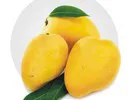The mango season is about to kick off, says Amit Sharma, owner of fruit trader Fresko Fruits: “Indian summers are nothing without mangoes. They are renowned for their aroma and flavor. Depending on the area and climate, India's mango cultivation season period differs, but it usually lasts from March through September. Mango farming in India relies on many variables, including temperature, soil type, irrigation, and insect control. Mango farming is best suited to mild, humid climates with well-drained soil. India has experienced some climate changes in recent years, which may affect the mango cultivation period going forward. For example, changes in temperature and rainfall patterns can affect the growth and yield of mango trees.”
 Sharma acknowledges the heavy rains that have hit India this year, and states these rains could definitely have an impact on the mango season. “Rains are essential for mango cultivation, but excessive rainfall can hurt the crop. Heavy rains during the flowering period can affect pollination, resulting in reduced yields. Additionally, excessive rainfall can lead to fungal infections and other diseases that can damage the mango crop. Temperature also plays a significant part, as extreme heat or cold can cause flowers to wilt and fall off before they have a chance to develop. Despite these challenges, India's mango industry has continued to flourish, I expect this season will be positive despite the heavy rains.”
Sharma acknowledges the heavy rains that have hit India this year, and states these rains could definitely have an impact on the mango season. “Rains are essential for mango cultivation, but excessive rainfall can hurt the crop. Heavy rains during the flowering period can affect pollination, resulting in reduced yields. Additionally, excessive rainfall can lead to fungal infections and other diseases that can damage the mango crop. Temperature also plays a significant part, as extreme heat or cold can cause flowers to wilt and fall off before they have a chance to develop. Despite these challenges, India's mango industry has continued to flourish, I expect this season will be positive despite the heavy rains.”
“Volumes of mango production in India fluctuate from year to year due to various factors such as weather conditions, pest infestations, and other natural calamities. Nearly half of the mangoes in the globe are grown in India. The focus of Indian mango exporters is primarily on meeting the demand of international markets. Some of the major export destinations for Indian mangoes include the United States, the United Kingdom, the United Arab Emirates, and Saudi Arabia. Indian mango exporters also target new markets in countries such as Japan, Australia, and New Zealand.”
Sharma loves being in one of the most vital sectors in India, growing the mangoes for the global market: “In summary, Indian mango cultivation is a crucial aspect of the country's agricultural sector. While weather conditions and other factors can impact the mango crop, India remains the largest producer of mangoes globally, and Indian exporters focus on meeting the demand of international markets,” he concludes.
For more information:
Amit Sharma
Fresko Fruits
Tel: +91 989 19 63633
Email: info@freskofruits.com
https://www.freskofruits.com/
